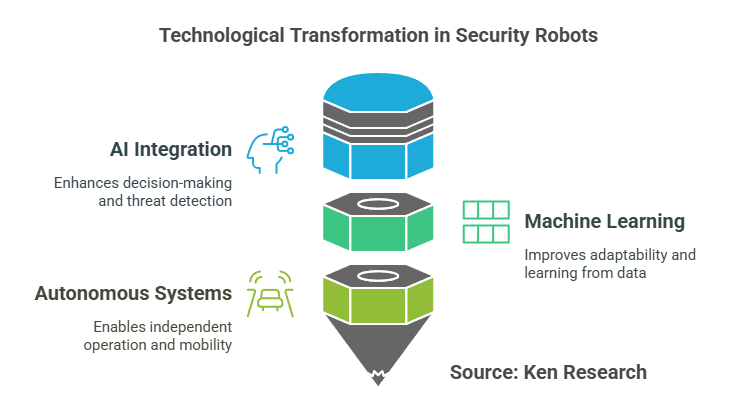How Progressive Web Apps Are Changing the Game

Strong 8k brings an ultra-HD IPTV experience to your living room and your pocket.
Innovation is something that never changes in the rapidly changing world of technology. Progressive Web Apps (PWAs), which bridge the gap between native mobile applications and traditional web experiences, have been a disruptive force in recent years. PWAs are rapidly changing the definition of the digital experience as businesses look for faster, more adaptable, and more affordable ways to engage users across platforms.
This article provides a comprehensive analysis for tech professionals and young people looking to stay ahead of technology trends by examining the history, technical foundations, benefits, drawbacks, and potential future developments of progressive web apps.
The Birth of PWAs: A Response to Changing User Behavior
The concept of Progressive Web Apps was first popularized by Google engineers Alex Russell and Frances Berriman in 2015. They observed a critical shift in user behavior: while users spent considerable time in native apps, they were reluctant to download new ones. Meanwhile, the mobile web had wide reach but suffered from poor engagement and performance.
Traditional mobile apps required significant friction — visiting an app store, downloading, installing, and regularly updating — which discouraged many users. In contrast, websites offered instant access but lacked the immersive experience and performance capabilities of native apps. Thus, the idea behind PWAs was simple yet powerful: deliver a web experience that feels and functions like a native app, without the downsides of app stores and heavy downloads.
Technical Anatomy of a Progressive Web App
PWAs leverage modern web technologies to offer an app-like experience directly through the web browser. The three core technical requirements that define a PWA are:
• Service Workers:
These are scripts that run in the background, independent of the web page. Service workers enable offline functionality, background sync, and push notifications, thereby enhancing performance and reliability even with poor or no internet connection.
• Web App Manifest:
This JSON file provides metadata about the app (such as the name, icon, theme color, and display orientation). It allows users to add the PWA to their home screen without using an app store.
• HTTPS:
PWAs require secure contexts to function, ensuring that data transmission remains private and secure.
Additional Technologies Enhancing PWAs
1. IndexedDB and Cache API: For robust offline data storage.
2. Web Push APIs: For real-time notifications.
3. Responsive Design: Ensuring compatibility across devices and screen sizes.
When correctly implemented, these components collectively enable PWAs to be reliable, fast, and engaging, offering a user experience comparable to — and in some cases, superior to — native apps.
Advantages of Progressive Web Apps
The rise of PWAs can be attributed to a host of tangible benefits for both developers and users:
1. Platform Agnosticism
PWAs work across all platforms with a modern browser — Windows, macOS, Android, iOS, Linux — eliminating the need for developing separate apps for each operating system.
2. Instant Access and No Install Barrier
Users can access a PWA via a simple URL and add it to their device home screen without going through app store installations. This seamless access significantly improves user acquisition and retention rates.
3. Offline Capability
Thanks to service workers and caching strategies, PWAs can function even when the network is unreliable or absent, offering a smooth user experience.
4. Cost-Effective Development
Building and maintaining a single PWA is cheaper than creating multiple native apps. Startups and enterprises alike benefit from lower development and maintenance costs.
5. Automatic Updates
PWAs update automatically in the background, ensuring users always have the latest version without needing to download patches or install updates manually.
6. Improved Performance
PWAs are optimized for speed. Quick loading times not only improve user satisfaction but also boost SEO performance, especially as Google’s Core Web Vitals prioritize fast and responsive websites.
7. Enhanced User Engagement
With push notifications, home screen presence, and offline functionality, PWAs drive higher engagement rates. Statistics from major brands have shown impressive increases in user sessions and conversion rates after deploying PWAs.
Real-World Success Stories
Many leading companies have already demonstrated the game-changing potential of PWAs:
Twitter Lite:
Twitter’s PWA, "Twitter Lite," saw a 65% increase in pages per session, 75% increase in Tweets sent, and 20% decrease in bounce rate.
Alibaba:
After implementing a PWA, Alibaba observed a 76% increase in conversions across browsers and a 30% increase in active users.
Pinterest:
Pinterest’s PWA led to a 60% increase in core engagements and a 44% increase in user-generated ad revenue.
Forbes:
Forbes replaced its mobile website with a PWA and witnessed a 100% increase in engagement and significant improvement in load times.
These examples underscore how PWAs are not just theoretical improvements — they bring tangible business benefits.
Challenges and Limitations
Despite their many advantages, PWAs also face several challenges:
• Limited iOS Support (Historically)
For a long time, Apple’s Safari browser offered limited support for key PWA features such as push notifications and background sync. Although support has improved, iOS limitations still pose challenges compared to Android.
• Lack of App Store Discoverability
Native apps benefit from visibility through app stores, which serve as centralized marketplaces. PWAs rely more on organic search and direct promotion unless hosted on emerging PWA directories.
• Hardware Access Limitations
PWAs can access device features like GPS, camera, and limited file systems, but they still lag behind native apps in deeper hardware integration (such as Bluetooth, NFC, advanced biometrics).
• Perception Barriers
Some users are accustomed to using app stores and may view PWAs as "just websites," leading to lower trust or reluctance to install.
The Future of PWAs
The trajectory of PWAs suggests a promising future as browser capabilities continue to expand. Some trends to watch include:
• Wider Browser and Platform Support:
Both Apple and Microsoft are increasingly supporting PWA standards, closing historical gaps.
• PWA in App Stores:
Google Play Store and Microsoft Store now allow PWAs, giving them greater discoverability.
• Advances in WebAssembly (WASM):
Technologies like WebAssembly are enabling near-native performance for web apps, enhancing the capabilities of PWAs.
• Enhanced Hardware APIs:
With new APIs under development (like Web Bluetooth, Web NFC, and File System Access API), PWAs will gain deeper access to device features.
• Enterprise Adoption:
Enterprises are increasingly adopting PWAs for internal apps, benefitting from easy deployment and updates across employee devices.
Ultimately, PWAs represent a future where the line between web and app blurs completely, offering faster, lighter, and more equitable access to digital experiences for everyone.
Conclusion
The digital world is undergoing a dramatic transformation thanks to progressive web apps. They provide a powerful answer to the demands of modern users for speed, reliability, and engagement by fusing the deep functionality of native applications with the accessibility of the web. It is essential for developers, companies, and tech-savvy youth to understand and use PWAs in the rapidly changing digital ecosystem. It is no longer just a competitive advantage.
As technology continues to democratize access and experience, progressive web apps are sure to be at the forefront of the next digital revolution. Innovative firms, like any top web design agency UK, are already realizing the revolutionary potential of PWAs and helping businesses deliver faster, more powerful online experiences to audiences around the world.
Note: IndiBlogHub features both user-submitted and editorial content. We do not verify third-party contributions. Read our Disclaimer and Privacy Policyfor details.







